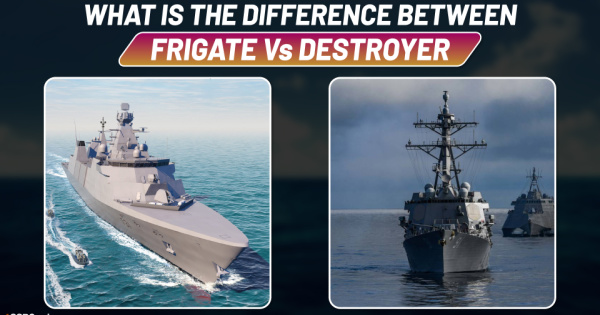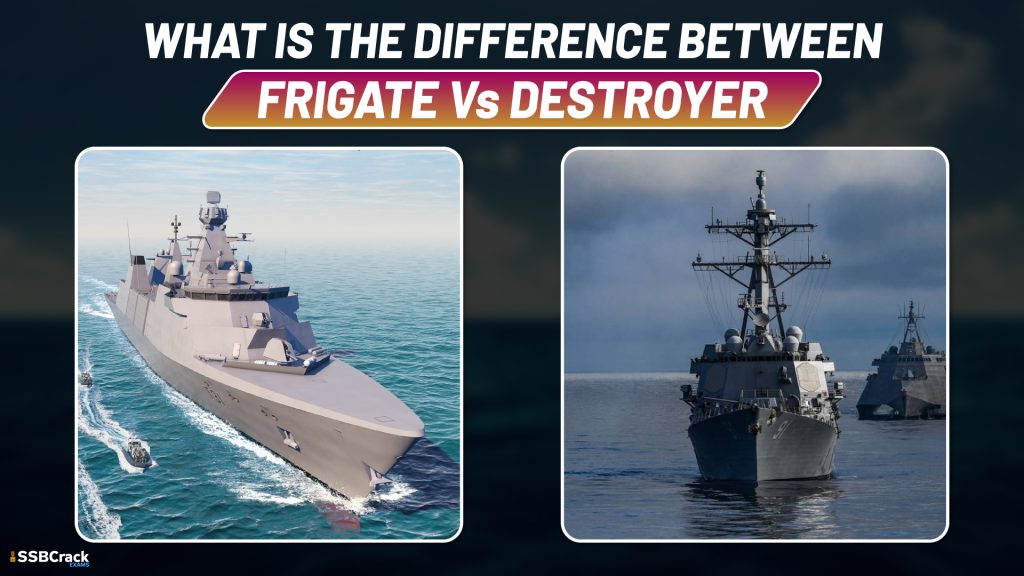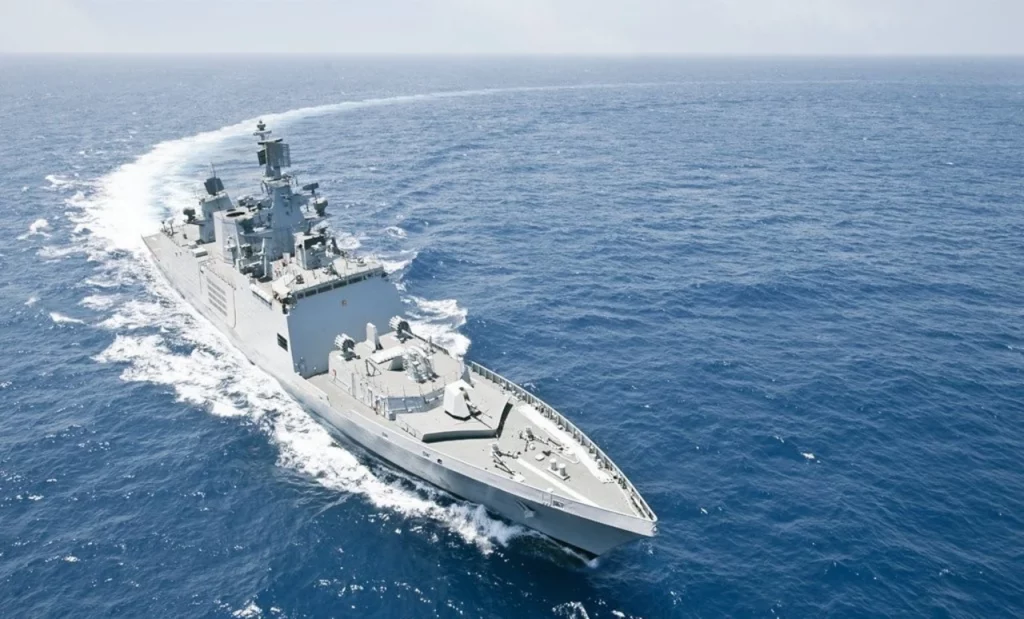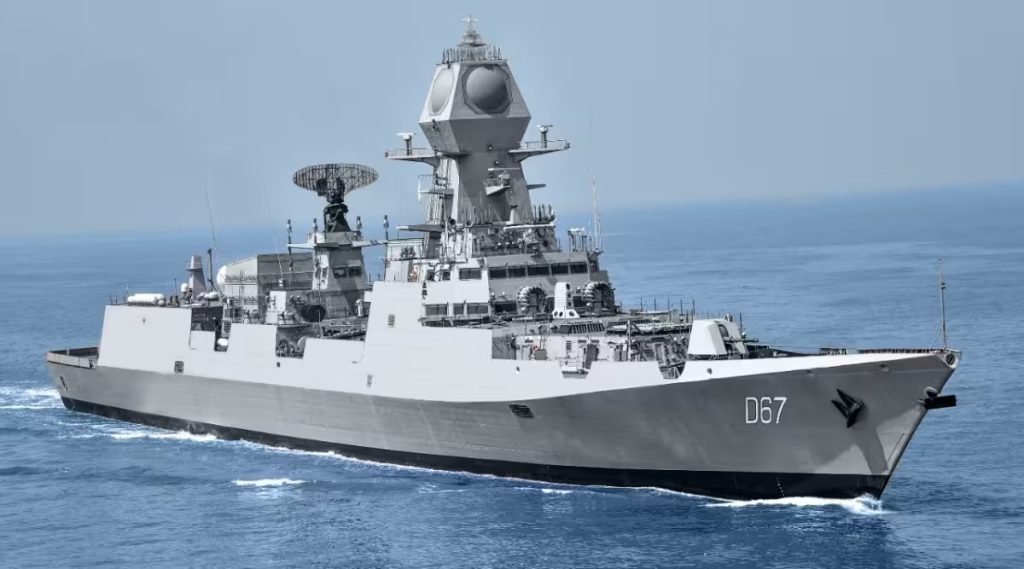Frigate vs Destroyer: Warships are an important component of a navy’s surface fleet and can be of many shapes and sizes based on their capabilities and functions. Frigates and destroyers are the two most frequent types of warships in most navies. What’s the distinction between these two vessels?
Frigates and destroyers are two of the most prevalent types of warships in the fleet of a navy. Both are built for speed and can be used to escort and protect larger vessels from air, surface, and subsurface threats. Because of the similarities between frigates and destroyers, some European navies use the names interchangeably.
Frigate vs Destroyer: Frigates
Frigates are the smallest of the three and possibly the smallest “blue water” ocean-spanning warships. Initially, the Frigate was a style of design, long, low and fast. Some long fast ships of the line were called “frigate-built”. It used to be a full-rigged ship with a single dedicated gun deck. Depending on the nationality, there was also a minimum gun limit. They were usually used for
- Scouting
- Patrol
- Dispatch boats for large fleets
- Independent commerce raiding.
In the role of patrol and commerce raiding, they acted independently and were sometimes referred to as cruisers. The Cruiser was initially a mission, not a class of ships. The Frigates would “cruise” the seas. Once armoured with turreted gunned ships became the norm, the Frigate became the Cruiser as there was no “gun deck”, the defining feature of a Frigate.
The term Frigate disappeared around the late 1800s or so. It did not reappear again until WW II. However, the British needed a vessel for convoy escort. The Destroyers were serving in much the same role as the Frigates during the Age of Sail. The ocean-going, long-endurance Destroyers were relatively fast and carried torpedoes to threaten and harass capital ships, like Battleships and Cruisers — and in short supply.
The Patrol Boats were not fast enough and did not have the range or seakeeping qualities to escort the convoys and protect them against submarines. A middle class was created that was not as fast or heavily armed (don’t need it against submarines or planes) as Destroyers, but still faster than the convoys. It was bigger than the Patrol Boats to carry more fuel and endure the rough ocean weather and waves. The British recycled the term Frigates for this new class of ships.
With the miniaturization of electronics and the advent of light and powerful gas turbines frigates can be packed with a lot more muscle today. In short modern-day use of frigate suggests that we do not intend to destroy you but if you mess up it wouldn’t be good for you. These modern-day roles include:
- Escorting merchant convoys
- Executing anti-submarine warfare
- Covering an amphibious landing
- Acting as the cordon for an aircraft carrier
- Leading a squadron of smaller ships
- Laying mines
- Blockading an enemy port
In size, frigates have grown from 3000 tonnes in the 1970s to 5000 tonnes today.
Frigates of Indian Navy
| Class | Type | Ships | Origin |
| Shivalik Class | Stealth Guided Missile Frigate | INS ShivalikINS SatpuraINS Sahyadri | India |
| Talwar Class | Stealth Guided Missile Frigate | INS TalwarINS TrishulINS TabarINS TegINS TarkashINS Trikand | India & Russia |
| Brahmaputra Class (advanced version of Godavari class) | Guided Missile Frigate | INS BrahmaputraINS BetwaINS Beas | India |
| Godavari Class | Guided Missile Frigate | INS Gomati | India |
Frigate vs Destroyer: Destroyers
Destroyers are much smaller than battleships but larger than frigates. They usually have one smaller gun (5 inches compared to Iowa’s 16-inch beasts) and lots of missiles, including anti-ship, surface-to-air, and cruise missiles (Tomahawks in the American case). Modern destroyers often have a helicopter pad as well, which helps with anti-submarine warfare.
The Destroyer has initially been a boat class to screen the Battleship and Cruisers, with their big, slow firing and cumbersome guns from the high-speed and nimble Torpedo Boats introduced around the late 1800s. A new class that was a bit larger, almost as fast and quick-firing smaller guns were introduced. This class was called the Torpedo Boat Destroyer, later shortened to Destroyer.
Destroyers are the primary multi-role, long-range, offensive warships that can lead a squadron to war and act as the command nerve centre. Today destroyers are typically the largest combat ships in any Navy after aircraft carriers and large amphibious helicopter carriers.
Modern destroyers usually have two helicopters; medium to long-range attack capability in all three dimensions – air, surface and underwater; long sea legs like 12,000 km + at cruise speeds; land attack capability via cruise missiles and extensive electronic warfare and monitoring abilities. Due to their size and reach destroyers act in many secondary war roles such as commando insertions & mine laying or other roles like anti-piracy, rescue, evacuations, natural disaster relief etc.
All are surface warships of differing sizes, degrees of multi-role capability and endurance at sea. As of today, Destroyers range from 5000 to 11,000 tonnes, Frigates from 3000 to 7000 tonnes and Corvettes from 500 to 3000 tonnes.
Destroyers of the Indian Navy
| Class | Type | Ships | Origin |
| Vishakhapatnam Class | Stealth Guided Missile Destroyer | INS Vishakhapatnam | India |
| Kolkata Class | Stealth Guided Missile Destroyer | INS Kolkata INS Kochi INS Chennai | India |
| Delhi Class | Guided Missile Destroyer | INS Delhi INS Mysore INS Mumbai | India |
| Rajput Class | Guided Missile Destroyer | INS Rana INS Ranvir INS Ranvijay | Soviet Union |
Frigate vs Destroyer: Conclusion
Frigates are warships which specialize in anti-submarine or anti-aircraft weapons and sensors, with a nominal weapon suite for surface action. On the other hand, Destroyers are comparatively larger warships, with heavy armaments, including missiles and long-range early-warning sensors in an attacking role. Frigates are often employed as an anti-submarine and anti-aircraft screen in a carrier battle group. Also, comparatively, frigates are slower than destroyers
- Currently 8 frigates (3 of Talwar Class and 5 of Nilgiri Class) and 1 destroyer (Vishakhapatnam class- advanced version of Kolkata class) are under construction. While 3 frigates (1 of Talwar Class and 2 of Nilgiri Class) and 1 destroyer (Vishakhapatnam class) have been launched while 1 destroyer of Vishakhapatnam class is undergoing sea trials
To crack the SSB Interview and join the Indian Armed Forces as an Officer, You can join our SSB interview live classes batch and we recommend you to Enroll SSB INTERVIEW ONLINE COURSE. Trusted by thousands of defence aspirants.
Also read:
- Top 5 Upcoming Ships and Vessels of Indian Navy [Full List]
- List Of Aircraft Used By the Indian Navy
- 10 Ways To Join Indian Navy In 2022
- List Of Helicopters Used By Indian Navy
- How To Become An Indian Navy Submariner?
- What Is The Difference Between AWACS And AEW&C?
- Difference Between Indian Navy And Indian Coast Guard
- What Is The Difference Between Frigate Vs Destroyer?
- 50 Latest Questions On Indian Navy Asked In SSB Interview

























